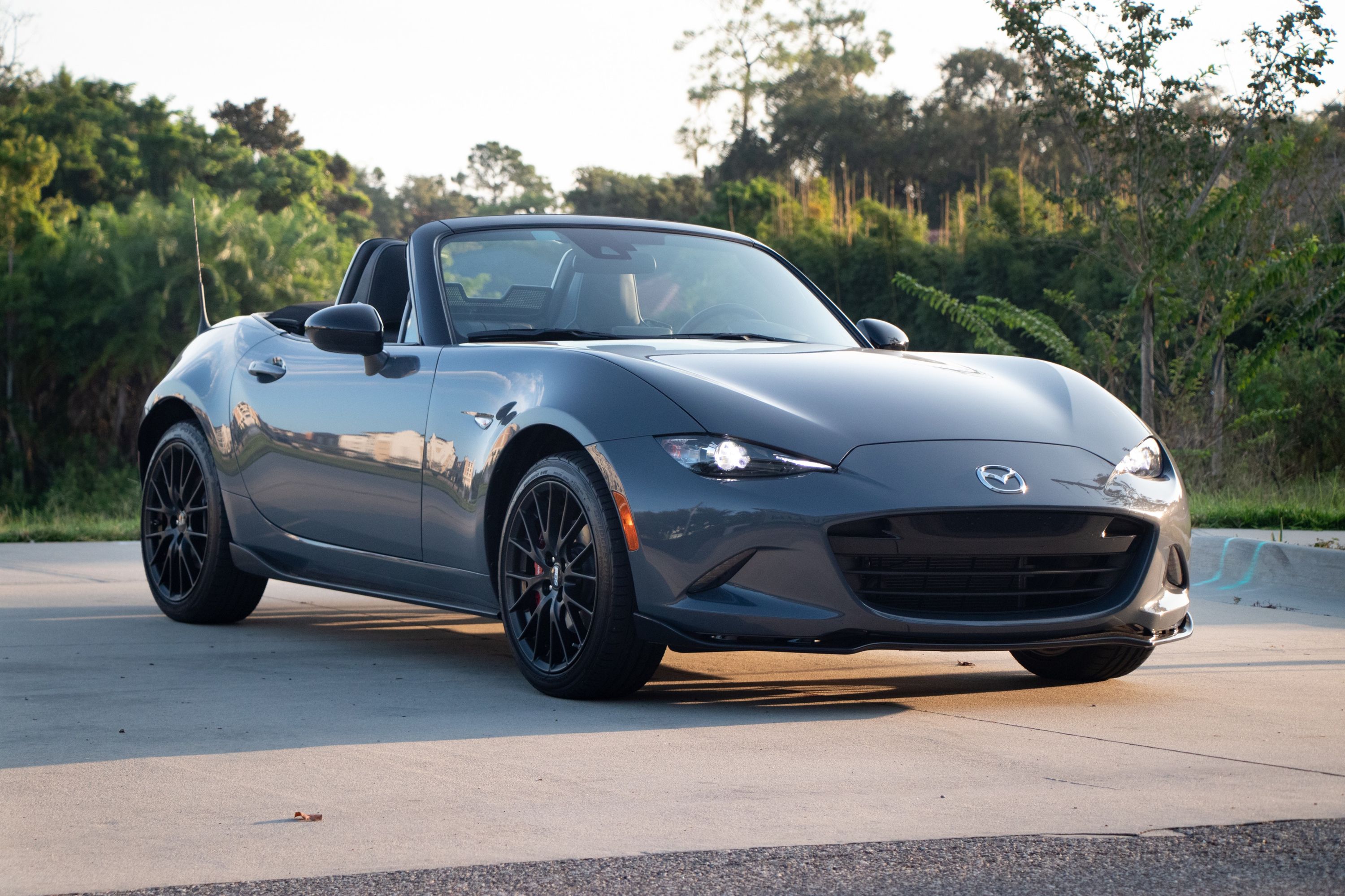
You have to have seen it. You're cruising down the interstate minding your own business when out of nowhere, a Mazda MX-5 Miata flies past with the roof down, the exhaust making way too much noise, and a huge wing on the back of it. "Utterly useless," you think to yourself. But just how useless is putting a wing on your convertible? Well, that's the question posed by Kyle Forster, a former F1 aerodynamicist for the Mercedes-AMG Formula 1 team.
In the following video, Forster uses computational fluid dynamics software to simulate the airflow on a convertible car with the roof down to see how much of the airflow actually reaches the wing on the back.
Forster runs a number of simulations in the video, taking into account varying combinations of roof on, roof off, windows open, windows closed, big wings, no wings, or a simple lip spoiler. Using an NA Miata with the available and much sought-after hardtop roof, we get to see how these variables affect airflow, but also affect drag and downforce. The roof of a convertible car, as it turns out, plays a massive role in how the air flows over the vehicle. The Miata loses 43% of its total downforce when the roof is removed when compared to the same wing setup with the hardtop roof installed, and 55% when using a lip spoiler instead of a wing.
That's not as much as it could've been though, as the extreme wing he uses is both tall and wide, with the width, in particular, allowing the outboard edges to still generate downforce. A narrower wing would not have been as effective, as the airflow diagrams he uses shows how the turbulent air generated aft of the windshield tapers in as it progresses to the rear of the car.
Wings and spoilers rely on airflow in order to function and be of any benefit. With the roof off, the cabin creates a mess of 'dirty' air, turbulent air caused by a low-pressure zone. Even with the roof on, the steep angle of the rear windscreen results in a small low-pressure zone that disturbs airflow. Forster says that fastback styling would alleviate this and improve airflow onto the wing, but also suggests that a massive wing standing very high above the car would receive better airflow by placing it in clean air.
In the case of a lip spoiler, even with the roof on, the low-pressure area behind the cabin creates a significant amount of turbulence, minimizing the effects of the wing, meaning that these types of spoilers - at least on the Miata - are aesthetic rather than functional.
It seems logical when you think about it, as anyone who's ever driven a Miata with the roof off will know how turbulent it gets in the cabin, but seeing it in this detail and with the science to back it up really hits home. The simple takeaway from all this is that if you're going to go racing, don't do it in a convertible. If you insist on doing so without a roof, get a huge wing that will sit outside of the turbulent wake left by the windscreen itself.
